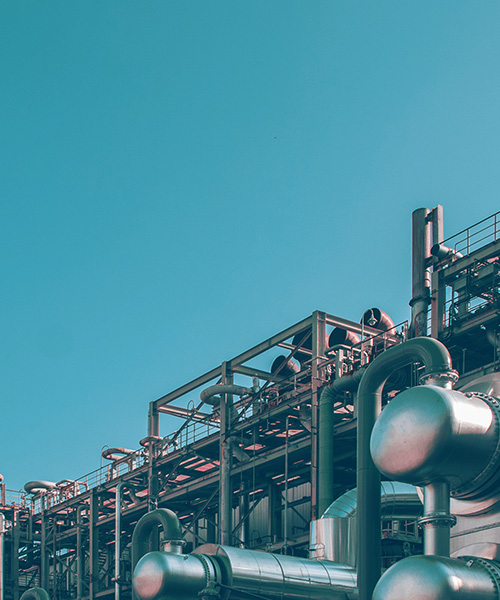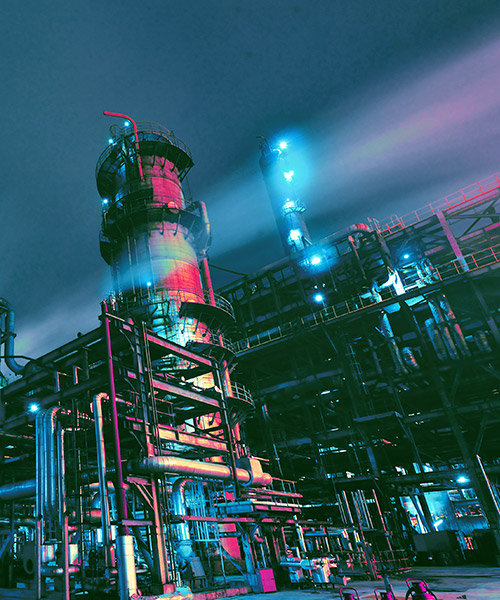February 05, 2024 • 4 min read
What trends will shape the chemicals and fuels sector in 2024?
Chris Mole discusses the opportunities and obstacles that will impact producers this year.

“The world needs more chemicals and fuels in 2024,” says Mole. “But meeting this demand – using more sustainable production methods – is a challenge for these industries.
“The changing global energy landscape means producers need to adapt to lower carbon alternatives, feedstock limitations and new policies. And they need to do this while expanding production to meet demand.”
Sustainability expectations are shifting long held industry dynamics. So, what trends does Mole expect to see across chemicals and fuels in 2024?
The shift to lower carbon fuels will continue
The types of fuels refiners produce – and the mix of feedstocks they use – are changing. But as Mole explains, the trends depend on the region.
“In the US, the availability of bio-based feedstock, as well as a regulatory push to open new bio-based pathways, favors the Hydroprocessed Esters and Fatty Acids (HEFA) pathway,” says Mole. “This technology is used in the production of biofuels, particularly renewable diesel and sustainable aviation fuel (SAF).
“This year, we’ll likely see a continuation in HEFA-based projects as new feedstock pathways open, as well as further development of gasification and fermentation-based routes to SAF,” he continues.
“This is needed to meet the Sustainable Aviation Fuel (SAF) Grand Challenge, laid out by the U.S. Department of Transportation, as airlines look to meet both company commitments and mandates.”
However, as Mole explains, it’s a different story in Europe.
“HEFA momentum is slowing in Europe because of a shift of focus towards synthetic or e-fuels. These are generated through the chemical combination of non-fossil-based carbon dioxide and hydrogen, or by utilizing low carbon hydrogen to produce ammonia.
“This shift is driven by regulatory preferences that favor these pathways over bio-based feedstocks, which are perceived to be competing with food crops,” he says.
There are distinct supply and demand trends in other regions, too.
“Middle Eastern nations will continue to explore options to monetize their gas reserves by producing blue fuels and chemicals or tapping into their abundant wind and solar resources to produce renewable fuels and feedstocks,” says Mole.
“Similarly, Australia is aiming to capitalize on its natural wind and solar resources by focusing on green ammonia production. And Japan and Korea will play a greater role on the demand side, as they look to import green and blue fuels to decarbonize their power sectors, representing the demand side of the equation.
We don’t expect regional feedstock constraints to pose a big challenge in 2024. That issue will play out closer to 2030.
The pace of the energy transition will impact the traditional refining sector
Over the last 18 months, the global refining industry experienced record margins due to tight product markets.
“These imbalances started to unwind towards the end of 2023, and I expect margins to normalize throughout 2024,” explains Mole.
Global refining capacity is expected to grow by 2.4 percent, or 2.5 million barrels per day, between 2022 and 2030 under the IEA Stated Policies Scenario (STEPS). The forecast net growth of 4.8 million barrels per day across China, the Middle East, India, and Africa is offset by declines in Europe, North America, and the rest of the world.
“This round of capacity additions in the Middle East and developing economies should be the last, with limited forecast capacity growth after 2030 in response to waning transportation fuel demand.”
In parallel, the regulatory focus in the developed world has shifted from air quality based fuel specifications to climate policy.
“This has diverted capital from refinery upgrades and expansions towards decarbonization of existing assets,” adds Mole. “This is occurring with the replacement of fossil fuel-derived grey hydrogen with low carbon hydrogen and renewable hydrogen, the deployment of carbon capture, use and storage (CCUS), and the production of low carbon fuels.”
Chemicals: Short term challenges vs long term opportunities
Mole notes that in the immediate future, the weakness of the global economy is exerting pressure on global chemical markets.
“There is a substantial wave of strategic Chinese investments occurring in petrochemicals, triggering a reorganization of global polymer trade flows,” he says. “Chinese feedstock intake is now surging as new facilities ramp up production, adding pressure on an already oversupplied global chemical market.
“In 2024, underlying demand may not rise rapidly enough to absorb the increased capacity. Feedstock consumption figures suggest plants may be idled in higher cost regions, prompting project cancellations or delays until stronger demand signals emerge.”
However, Mole’s longer term view of the chemicals market is that it will grow faster than global GDP.
“Current market conditions represent a countercyclical investment opportunity for the long term,” he says. “Middle Eastern and Western majors are already attempting to seize this future market by targeting inexpensive feedstock in the Middle East or North America to produce products for growth markets, such as Asia.”
Positioning to meet longer term financial and sustainability targets
The future of the chemicals and fuels sector is bright. Growing populations need more liquid fuels – in their traditional and lower carbon forms – as well as chemicals.
![]()
The energy transition requires significant adjustments to existing refining and petrochemical assets, and long term success depends on establishing sustainable pathways as early as possible.
According to Accenture, the market for such offerings, which stood at approximately US$300 billion in 2022, is expected to reach about US$500 billion by 2027 – an additional US$200 billion of the US$700 billion total expected chemical industry growth over that period.
“For operators planning beyond 2030, the spotlight will be on syn-gas and fermentation to products, succeeded by the rise of e-fuels sourced from biogenic carbon dioxide and renewable hydrogen,” Mole says.
“The energy transition will drive heightened demand for sustainably produced chemicals, such as bio-based feedstocks for plastic recycling, as well as chemicals that enable sustainable transformation, like amines for carbon capture facilities.
“Chemicals and fuels producers need to safeguard their social license in a decarbonizing world. Sustainable production pathways already exist. And 2024 is the year to proceed with projects that will prove sustainable production is profitable at scale.”




